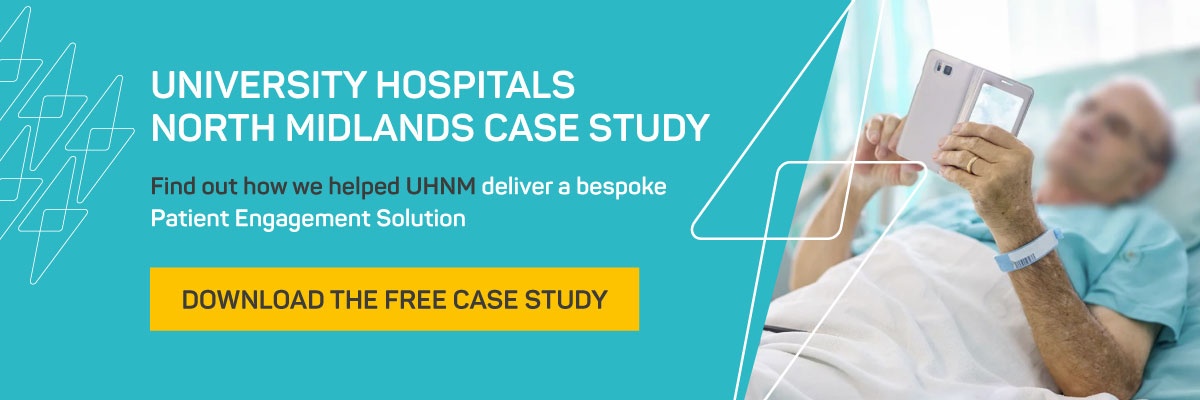CQUINs Explained: A Breakdown of the 2019/20 Targets
5 minute read | 10/06/2019

An inspired workforce, the latest technological advancements and even boosting patient happiness contribute towards the yearly Commissioning for Quality and Innovation (CQUIN) targets that are set.
This year, however, the NHS has revealed that no new targets will be set. Instead of creating new goals, CQUIN will highlight evidence based on good practice so the benefits can be spread more rapidly.
Criticism and the New Approach
In the past, the CQUIN scheme has attracted criticism for requiring significant cost to implement. This boils down to the inclusion of new and complex goals, setting outcome-based targets which imposed unfairly distributed burden on providers or even required action which was outside the control of an organisation.
In 2019/20, the NHS is taking a drastically different approach to CQUIN. Rather than setting new goals, CQUIN will instead simply highlight evidence-based good practice which is already being rolled out across the country.
This draws much-needed attention through the scheme to the benefits for patients and providers. In doing so, it allows the benefits to spread rapidly. Any measures that had been recognised as bureaucratic or burdensome from the 2018/19 scheme have now been removed.
CQUIN is now being given fresh and clinical momentum with the priority being simplicity and deliverability. Proposals have been tested to ensure that the chosen indicators focus on proven methods. This should help to eliminate new cost pressure.
CQUIN Targets - Highlighted Good Practice Selected for Inclusion
The Clinical Commissioning Group (CCG) CQUIN scheme highlights the repeatable methods selected from the current CQUIN goals, broken down into four priority areas. They’ve all been reviewed to ensure they’re in line with current practices and are straightforward to implement.
Prevention of Ill Health
CCG1: Adherence to national antibiotic in the treatment of lower urinary tract infections in older people and antibiotic prophylaxis in elective colorectal surgery.
Applicability: All acute hospitals treatments mentioned above.
CQUIN Goal: 60-90%.
CCG2: Achieving an 80% update of flu vaccinations by frontline clinical staff.
Applicability: All NHS providers with frontline staff.
CQUIN Goal: 60-80%.
CCG3: Screening and brief advice for tobacco and alcohol use in inpatient settings.
Applicability: Acute, community and MH providers.
CQUIN Goal: Screening - 40-80%, brief advice 50-90%.
Mental Health
CCG4: Achieving 80% of adult mental health inpatients receiving a follow-up within 72 hours of being discharged.
Applicability: All mental health trusts.
CQUIN Goal: 50-80%.
CCG5: Improving the quality and breadth of data submitted to the mental health services dataset.
Applicability: All mental health trusts.
CQUIN Goal: DQMI - 90-95%, interventions - 15-70%.
CCG6: Achieving 65% of referrals finishing a course of treatment which had paired scored recorded in the specified anxiety disorder-specific measure.
Applicability: All MH providers with IAPT services.
CQUIN Goal: 30-65%.
Patient Safety
CCG7: Achieving 80% of older inpatients receiving key falls prevention actions.
Applicability: All acute trusts and community hospitals.
CQUIN Goal: 25-80%.
CCG8: Achieving 85% of peripherally inserted central catheters (PICC) lines secured using a SecurAcath device.
Applicability: All community providers.
CQUIN Goal: 70-85%.
Better Practice Pathways
CCG9: SSNAP six-month review for all discharged stroke patients.
Applicability: All community service providers of stroke rehabilitation.
CQUIN Goal: 35-55%.
CCG10: Ensure access to patient data at the scene, in line with nationally prescribed approaches.
Applicability: All ambulance providers.
CQUIN Goal: 100% passed assurance and 5% records accessed at scene.
CCG11: Eligible patients to be managed in a same-day setting.
Applicability: Acute providers with type 1 ED.
CQUIN Goal: 50-75%.
All of these CQUIN goals and targets are in place to meet the NHS Long Term Plan. As health needs change, society develops and medicine advances, the NHS has to continually move forward.
This is so that in 10 years time, we all have a service fit for the future. The NHS Long Term Plan is drawn up by frontline staff, national experts and patient groups to be ambitious yet realistic. This new and fresh approach to the 2019/20 CQUIN targets is all in support of the Long Term Plan.
Read the in-depth breakdown on the NHS’ CQUIN targets.
Patient satisfaction can play a major role in helping trusts meet CQUIN targets. One of the most effective ways of achieving patient satisfaction is by deploying fast and reliable WiFi.
How WiFi Can Help Meet CQUIN Targets
Patient Engagement Systems
Hospitals and NHS Trusts can sometimes feel like lonely places, especially for patients that have to wait for long periods to be discharged. To make the patient experience a positive one, patient entertainment systems can replace legacy systems by offering more advanced and convenient features.
Whether it’s watching live TV and streaming videos, accessing educative content or seeing important messaging and ads, or even service requests and meal ordering, patient engagement systems can ultimately boost patient mood and happiness. With positive feedback, NHS staff can focus on delivering a better healthcare service to meet those CQUIN targets and goals.
Using WiFi Analytics
Choosing the right WiFi vendor that lets you own valuable analytics allows you to make service improvements. Rather than relying on simple connectivity, data like patient trends can play a big role in meeting relevant CQUIN targets.
Data is vital as it can give you insight into where resources are being allocated and where they can be better used instead. Knowing how patients and even visitors interact with your hospital’s services allows you to tailor your offerings to match their behaviour. The end result? A significant boost in NHS productivity and a more efficient hospital environment.
See How the Right WiFi Solution Can Help Your Trust
When looking for a reliable WiFi supplier, look for one that can help you achieve the CQUIN targets by offering a bespoke solution. That’s exactly what we did at WiFi SPARK for the University Hospitals of North Midlands NHS Trust (UHNM).
Their goals ranged from enabling patients to get online simply and easily, to using wayfinding services and appointment check-in through the WiFi. The team at WiFi SPARK put a ‘hospital first’ solution in place which you can read about in more depth in the case study below.
About the author
Rebecca O'Donovan
Becky is the Marketing Director at SPARK TSL, of whom she has worked for since 2012. She is responsible for high-level marketing strategy focusing on lead generation and aiding the vision of the business to ensure business growth.
More articles by the author
Related articles
 Healthcare Industry
Healthcare Industry
Aiding the NHS Journey to Carbon Neutrality Through Technology
In response to escalating climate concerns, the NHS is committed to reducing its carbon footprint and ...
 Company News
Company News
SPARK TSL at the Healthcare Partnership Network
Two days packed full of presentations, networking, panel discussions and one-to-one meetings all centered ...
 Company News
Company News
SPARK TSL's Vision for 2025: Connecting Healthcare, Empowering Teams
As we step into 2025, the landscape of healthcare is evolving faster than ever, driven by advancements in ...


